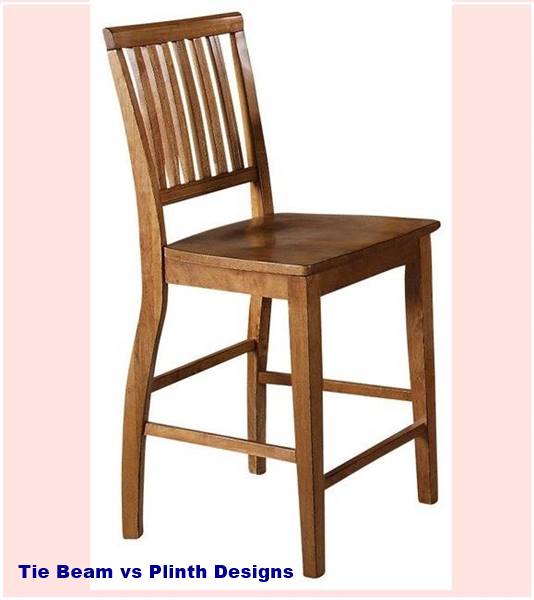Tie Beam vs Plinth Beam is the second question and The first question is what is a Tie Beam?
A Tie beam is a beam connecting two or more columns for making it more stiffens to make the structure as a frame for stability.
Tie beam not carry and a vertical load of slab or walls but take axial compression load so some time act as a horizontal column.
the tie beam is used to stiffening the whole building on the foundation level which helps in minimizing the settlement and displacement for a foundation.
A horizontal beam connecting two rafters in a roof or roof truss.
What is the function of a tie beam? Why is it provided?
Tie beams can have several functions, some being:
- Keep the spread footings in their positions during seismic events;
- Serve as grade beams to redistribute vertical loads through moment and shear in the event of differential settlement.
- It Serves as strip footings to support interior or exterior walls.
- Serve as grade beams over a pile foundation to link the pile caps and support the structure above.
What is the plinth beam?
The plinth beam is a beam in a framed structure provided at or above (sometimes below) ground level that takes the load of the wall built on top of it.
Most other beams are subjected to loads not only from walls but also from the load from the slab, such as dead loads (self-weight of the slab, floor finish, etc.) and live load.
Plinth beams also serve another indirect purpose – they reduce the length of the columns thereby reducing their effective length and slenderness.
The plinth beam in a frame structure is meant to join all the columns thereby reducing the effective length and thus reducing the slenderness of the columns.
Plinth beams are usually used in case the foundations are bit deeper and thus they act like a bracing or tying element.
One more reason to provide a plinth beam is to avoid differential settlement in a building this is due to the reason that all the load of the wall is than carried by the plinth beam underneath.
In a skeletal system which is the other name of a framed structure; the plinth beam is the first beam to be constructed after foundation.
As the finish floor level of the ground floor is kept higher than the ground level; the empty gap and void are filled with compacted soil so as to achieve a stable surface for the floor to be constructed.
The beams provided at the plinth level are called plinth beams.
Tie Beam vs Plinth Designs

Also known as a tie beam. It is made so that the columns do not split due to load coming from above.
Ever wondered the function of the footrest at the bottom of the chairs? Now that acts as a plinth beam.
Usually, they may not carry any slab load and designed to carry their own self-weight and masonry load above the plinth beam.
These beams usually take care of the differential settlement of foundations of About 12 inches.
They can be designed as a composite beam of masonry and concrete.
The composite action may be considered and the beam is designed for wL^2/30 instead of the usual wL^2/10.
What is the difference between the plinth beam and tie-beam?
The beam is below the ground level and to matches, the structure level to the ground called the plinth beam.
It’s help column in position and marked the structure outer area above on which structure build called plinth area.
Tie beams are provided when column height is more than its slenderness capacity and chance to buckling or any other failure occur due to loads.
The tie beam provides support to the column and reduces buckling pressure.
Here is Some Difference between these two beams:
Plinth beam
Tie beam
- Friends, it comes in ground level
- it provides the level difference between the formation to the internal floor level.
- It retains the filled soil inside the building.
- And It provides a base for the blockwork.
- It distributes the load on all footings.
- It can come at any level of the structure.
- Basically, when there is a free-standing of columns, a tie beam will be provided to keep the slenderness ratio and buckling of columns.
- Tie beam can come below the ground or above the ground.
The plinth beam is a reinforced concrete beam constructed between the wall and its foundation.
The plinth beam is provided to prevent the extension or propagation of cracks from the foundation into the wall above when the foundation suffers from the settlement.
A plinth beam distributes the load of the wall over the foundation evenly.
Tie Beam vs Plinth designs in Details
How to make money in Dubai / 7 Easy Step in 2023
Best driving school in Dubai in 2023
Society of Engineers (SOE) card
What is the law for a VPN UAE?
How to get a freelance visa in UAE
Start a business without money
How to apply for a job in Canada from Dubai
UAE vs Qatar: Is UAE better than Qatar? (2023)